Free Tour Bus to theFour Suwa Taisha Shrines
Shinyu-go, operated by our nearby sister facility, is a free shrine tour bus to the Suwa Taisha Shrines. Our knowledgeable driver/guide will take you to the four Suwa Taisha Shrines in this comfortable bus. While enroute, you can enjoy learning the history of the Suwa area by listening to the informative audio recording created by the hotel.
Departure Times
Afternoon departure at 1:20 p.m.
Guests staying at the hotel are also free to use the bus either before check-in or after check-out. Advance reservations are required. If you wish to use the bus, please call to make a reservation.
Tour Information
-
Suwa-hime, the official mascot of Suwa City, will escort you inside the bus as you visit the four shrines
Suwa-hime, the official mascot of Suwa City, will serve as your tour guide inside the bus as you visit the four shrines. You can learn about the history of the shrines by watching the monitor, and enjoy gaining a basic knowledge of Japanese deities while enroute in the bus.
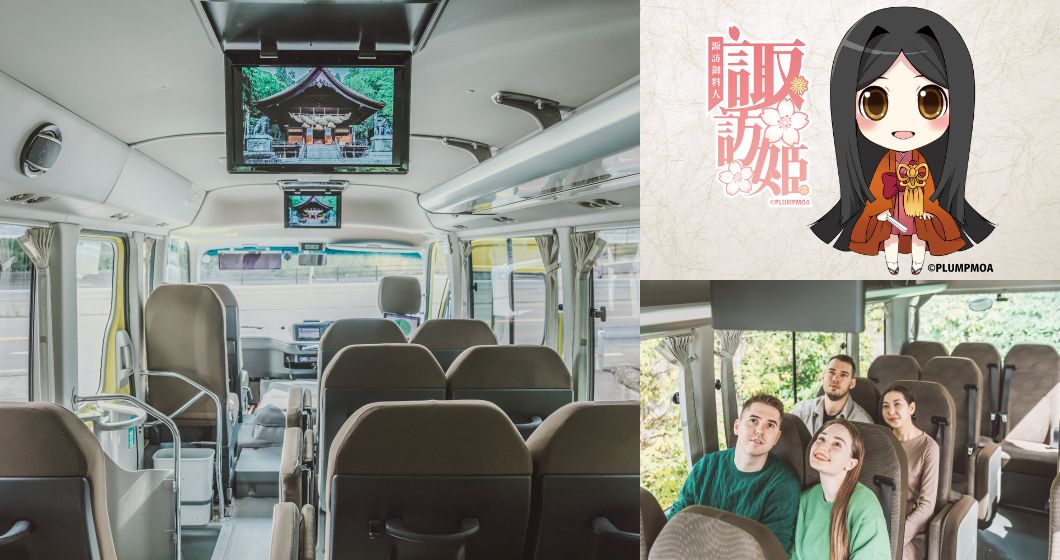
-
Explore the four shrines using the Suwa Taisha NAVI smartphone app
Suwa Taisha NAVI, an app exclusively for the Taisha Shrines, also features Suwa-hime to escort you. Please enjoy yourself while leisurely reading the detailed explanations at each site.
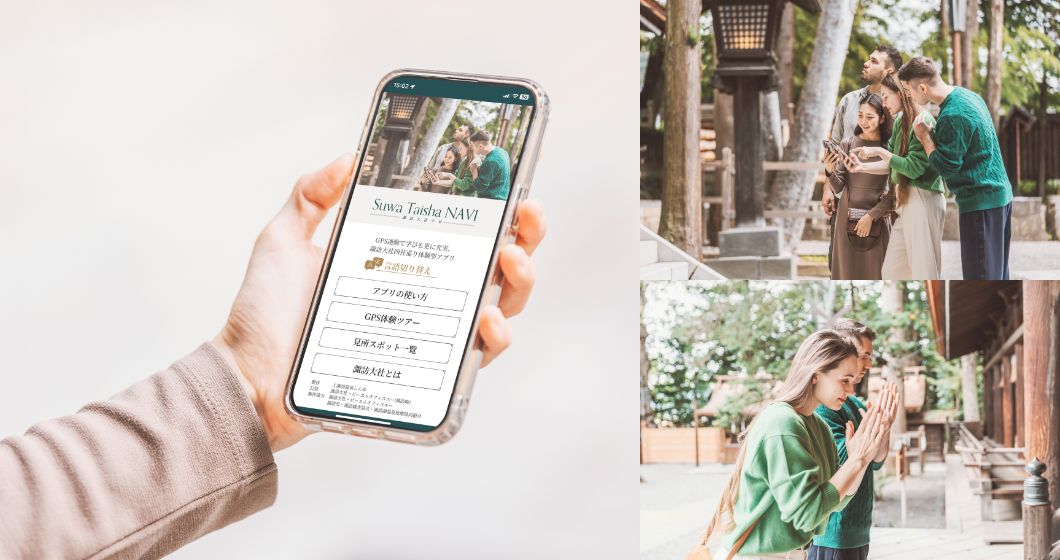
-
Purify your hands by rinsing with water and touch the Onbashira pillars to feel their power
When visiting shrines, it is customary for people to purify their hands and mouths with flowing water in a ritual known as “chozu.” After experiencing the ritual, you can actually touch the Onbashira pillars to feel their power.
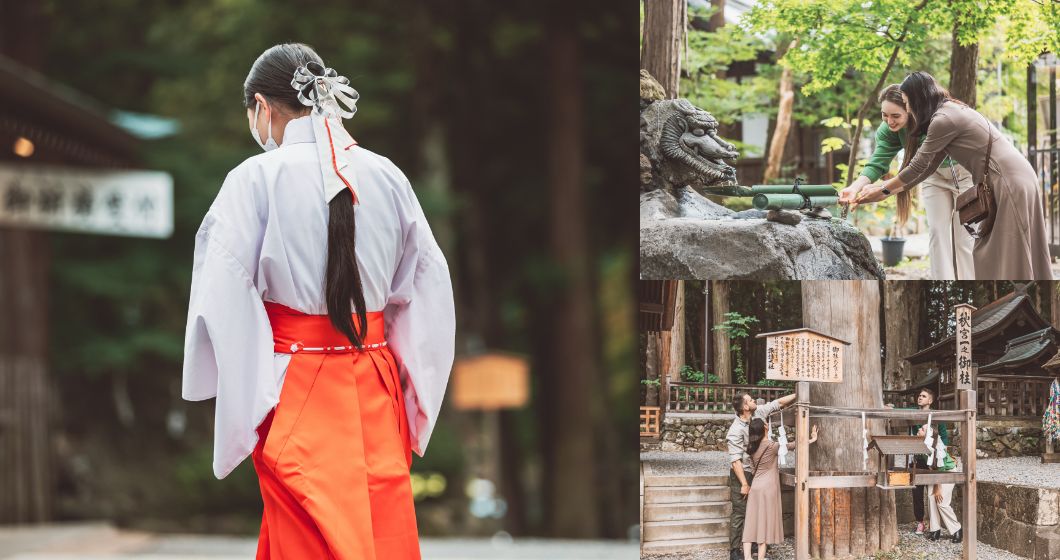
Sightseeing Course
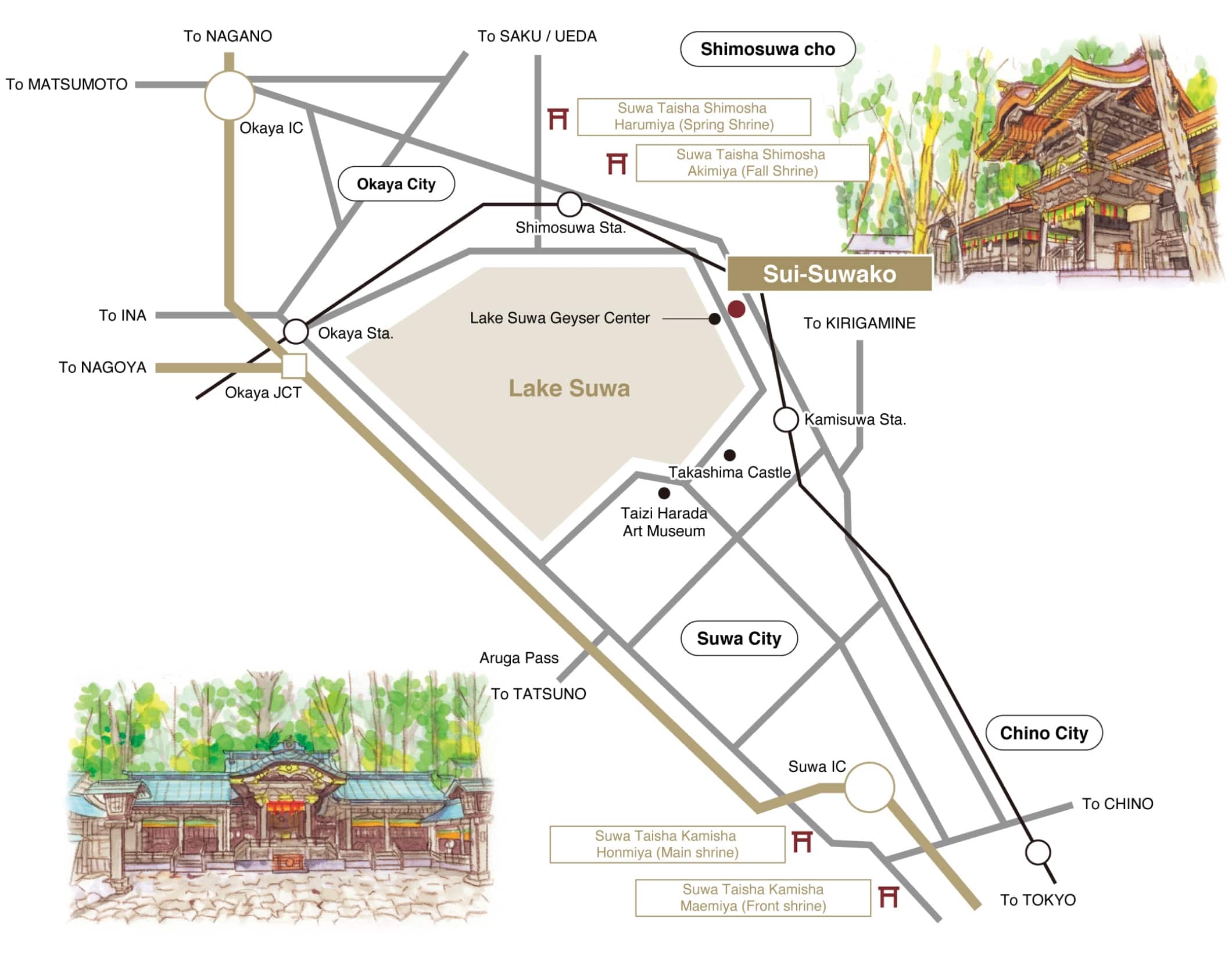
-
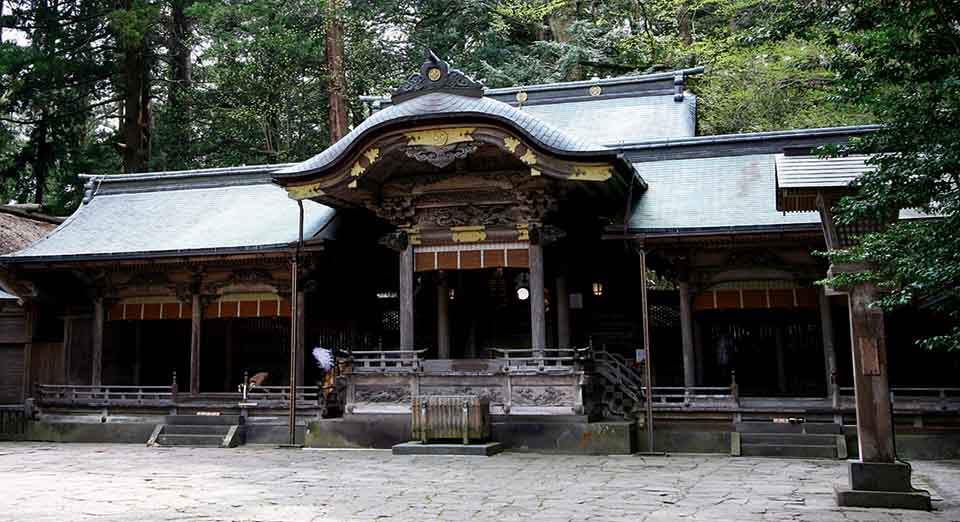
Suwa Taisha Honmiya,filled with divine energy
This is a solemn sanctuary where you can sense clear, divine energy. The shrine is dedicated to the deity Takeminakata, also known as the guardian deity of Japan. It is located at the foot of Mt. Moriya, and the mountain itself is considered the body of the deity. The mountain is also the location of the only primeval forest in the Chubu region. The shrine is located atop the Chuo Line Tectonic Line, a major fault line created approx. 80 million years ago that runs through the Japanese archipelago from the Kanto region all the way to Kyushu, and is known as a spot where the energy of the Earth can be felt. Ise Jingu Shrine, Toyokawa Inari Shrine, Tenkawa Daibenzaiten Shrine, and the Bungui Pass are also located on the fault line.
-
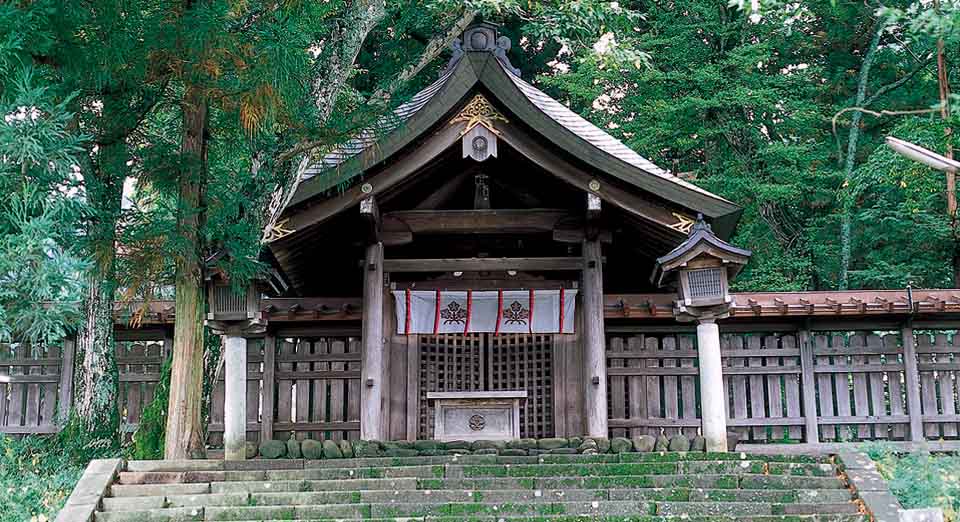
Suwa Taisha Maemiya,which soothes your soul
This shrine stands amidst a forest in its natural state, in an area that used to be taboo for people to enter. Although it is the smallest of the four shrines, it is a simple, quiet, and peaceful place. It is located to the south of Lake Suwa, and is said to be the birthplace of the Suwa belief system. There is a main shrine building and a roughly 18-meter-long hallway built in 1932 using lumber from Ise Jingu Shrine. This is the only one of the four shrines that has a main hall.
-
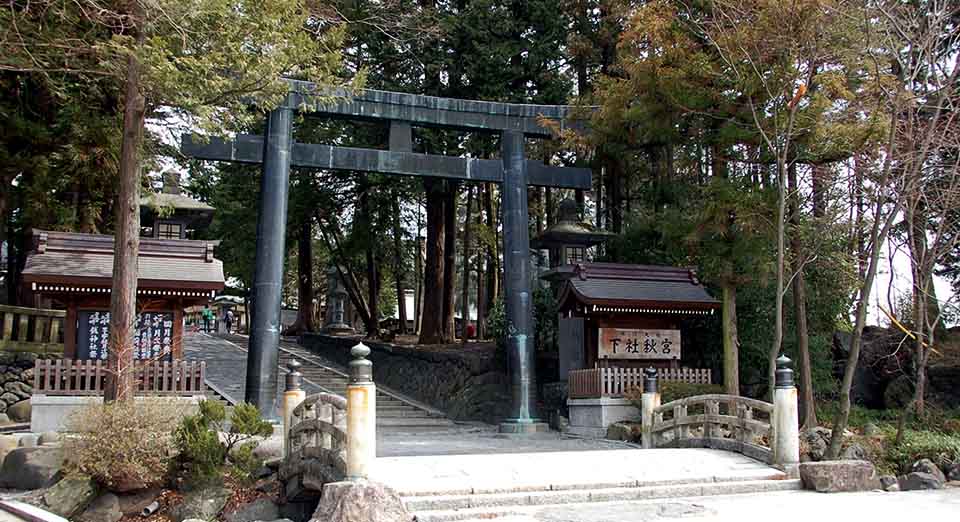
Suwa Taisha Akimiya,where the sacred shimenawa rope protects against impurities
Many of the historic buildings here have been designated as important cultural properties, including the hall for performing Shinto music and dances built in 1835 and the worship hall built in 1781. The bronze guardian dog statues are 170 cm tall, the largest in Japan. The sacred shimenawa rope at Akimiya Shrine ties for the largest in Japan, as it is the same size as the one at Izumo Taisha Shrine. The rope is wound to the left to prevent impurities from entering, while the one at Izumo Taisha Shrine is wound to the right to prevent impurities from exiting. The sacred tree is an 800-year-old rooted cedar, which can be seen in front of the shrine. It is said to help people who snore at night to get a good night’s sleep by placing the leaves under their pillow.
-
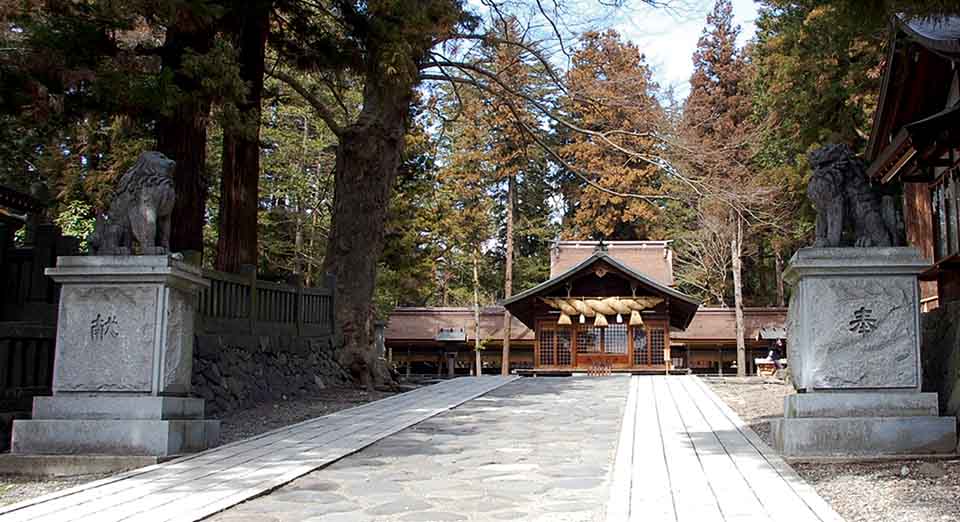
Suwa Taisha Harumiya,where purify yourself in the clear running water
The approach to Harumiya Shrine is connected to Lake Suwa, with the clear waters of the Togawa River flowing alongside and an island shrine seeming to float in the middle of the lake. It is said that this island does not submerge even during great floods due to its divine power. The Edo period carvings of Chinese lions and tapirs in the hall of offerings and worship are nationally important cultural properties. The matchmaking cedar tree, divided in two yet united at the base, is said to bring good luck in the marriage. Geba Bridge, located along the approach to the shrine, was built in the Muromachi period (1336-1573), and below it flows the Mitarashi River, which is said to have purified all people.



